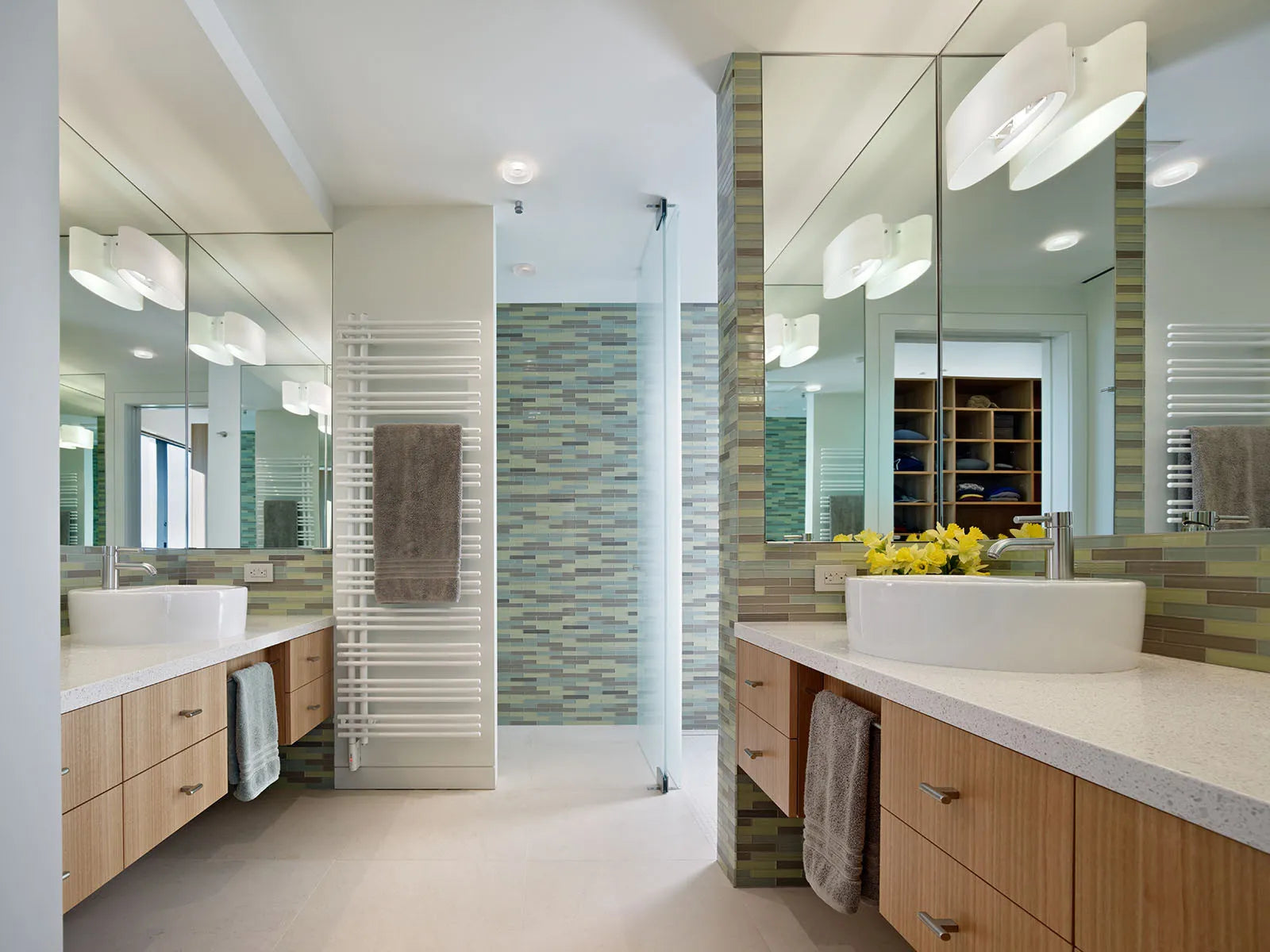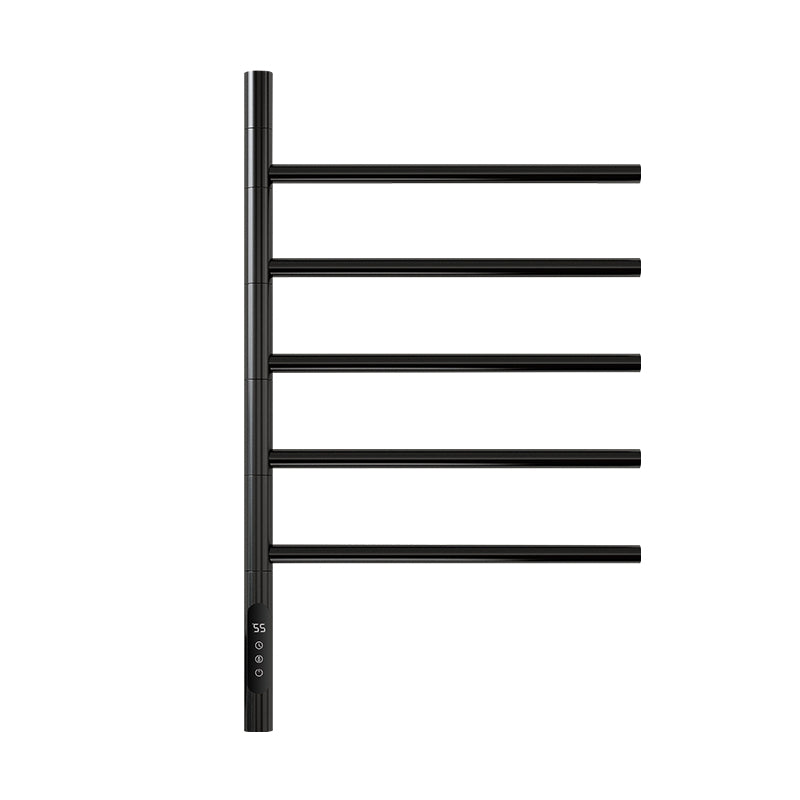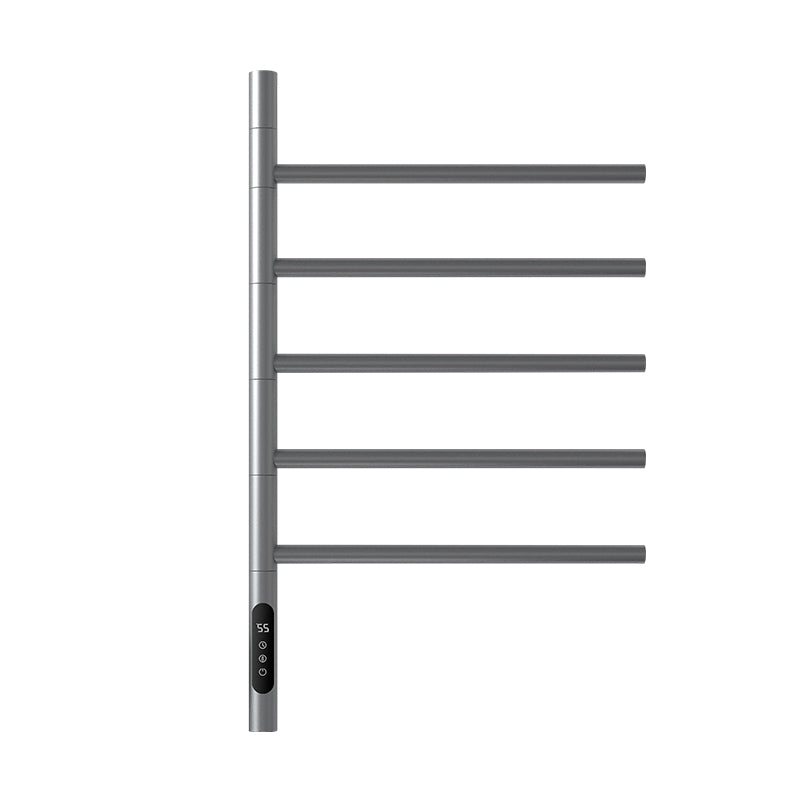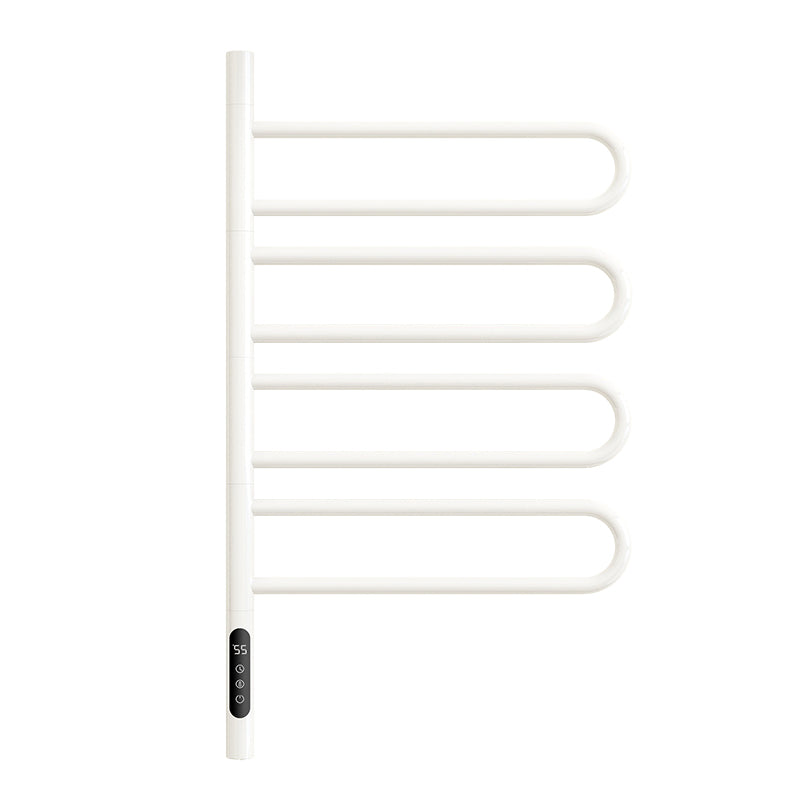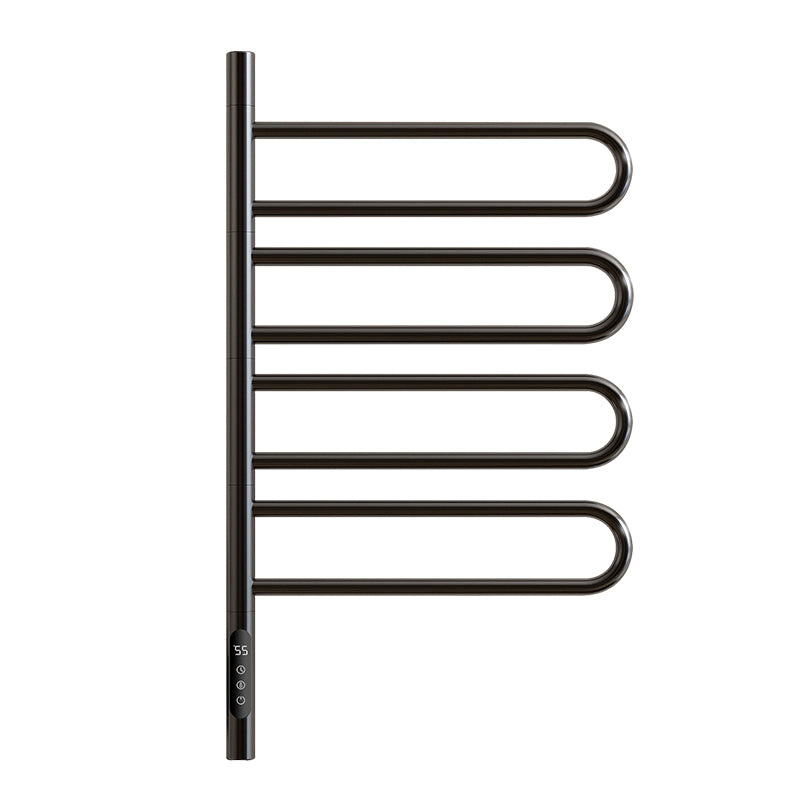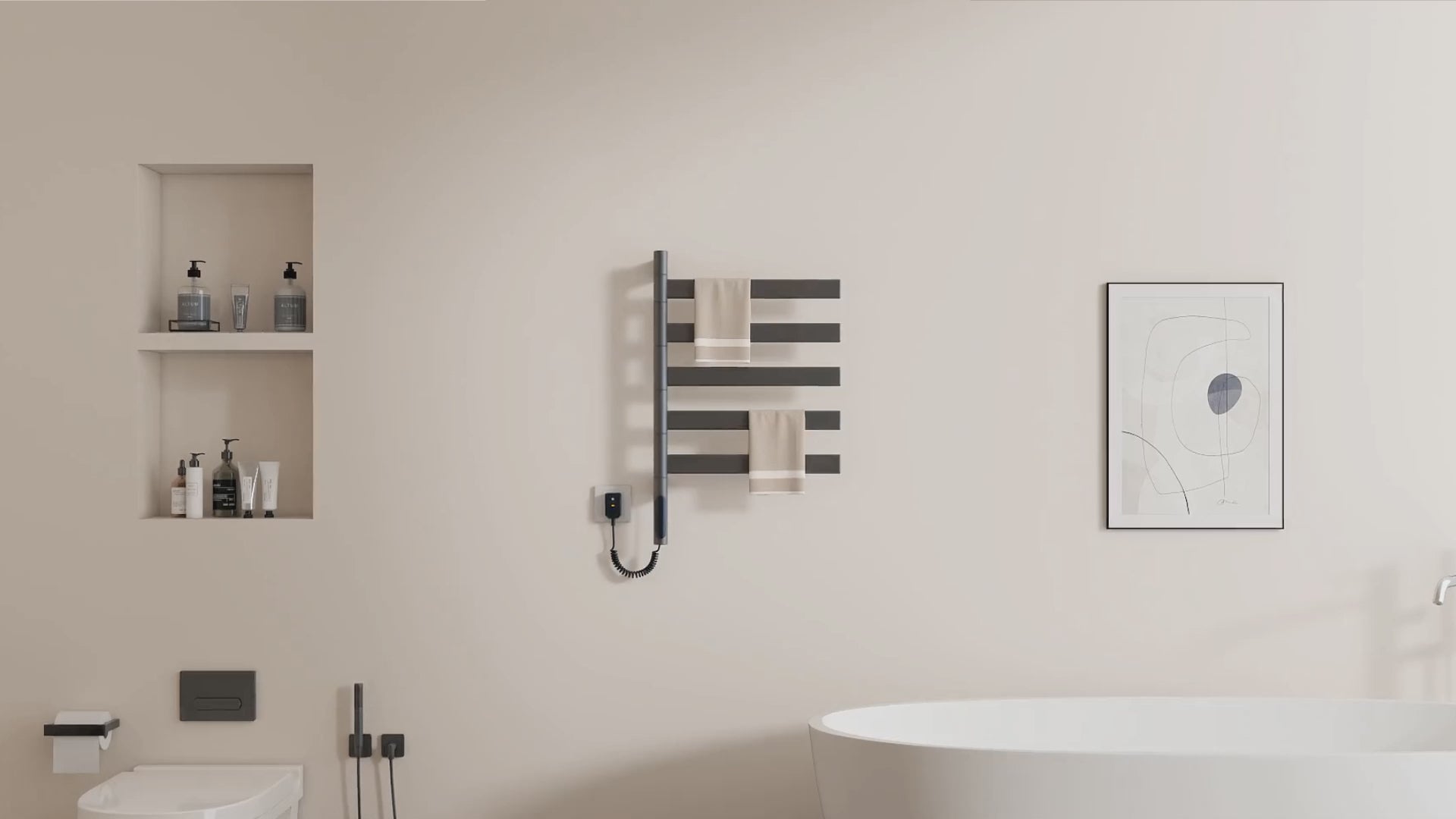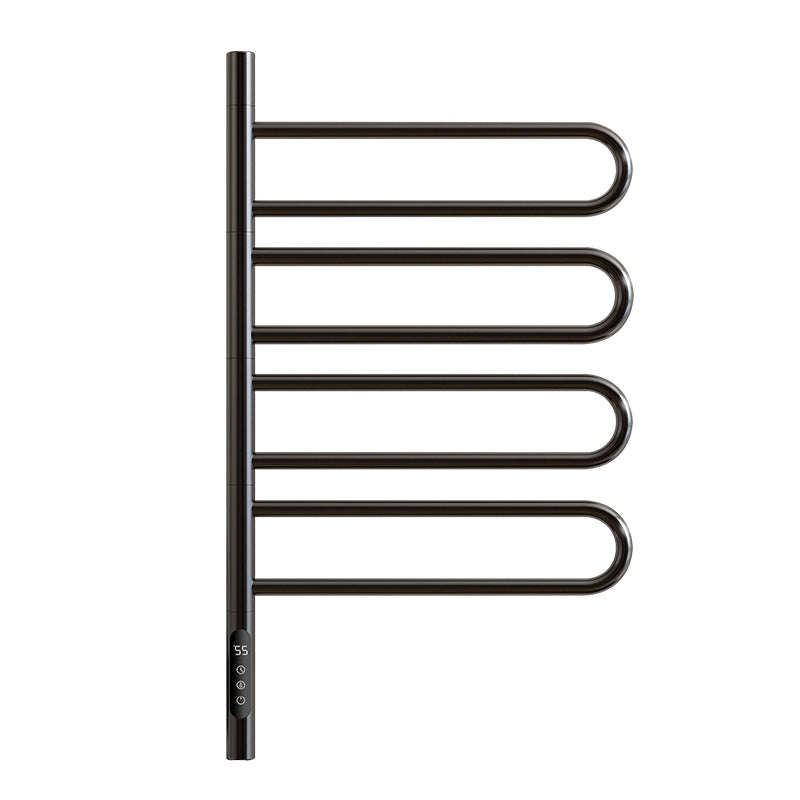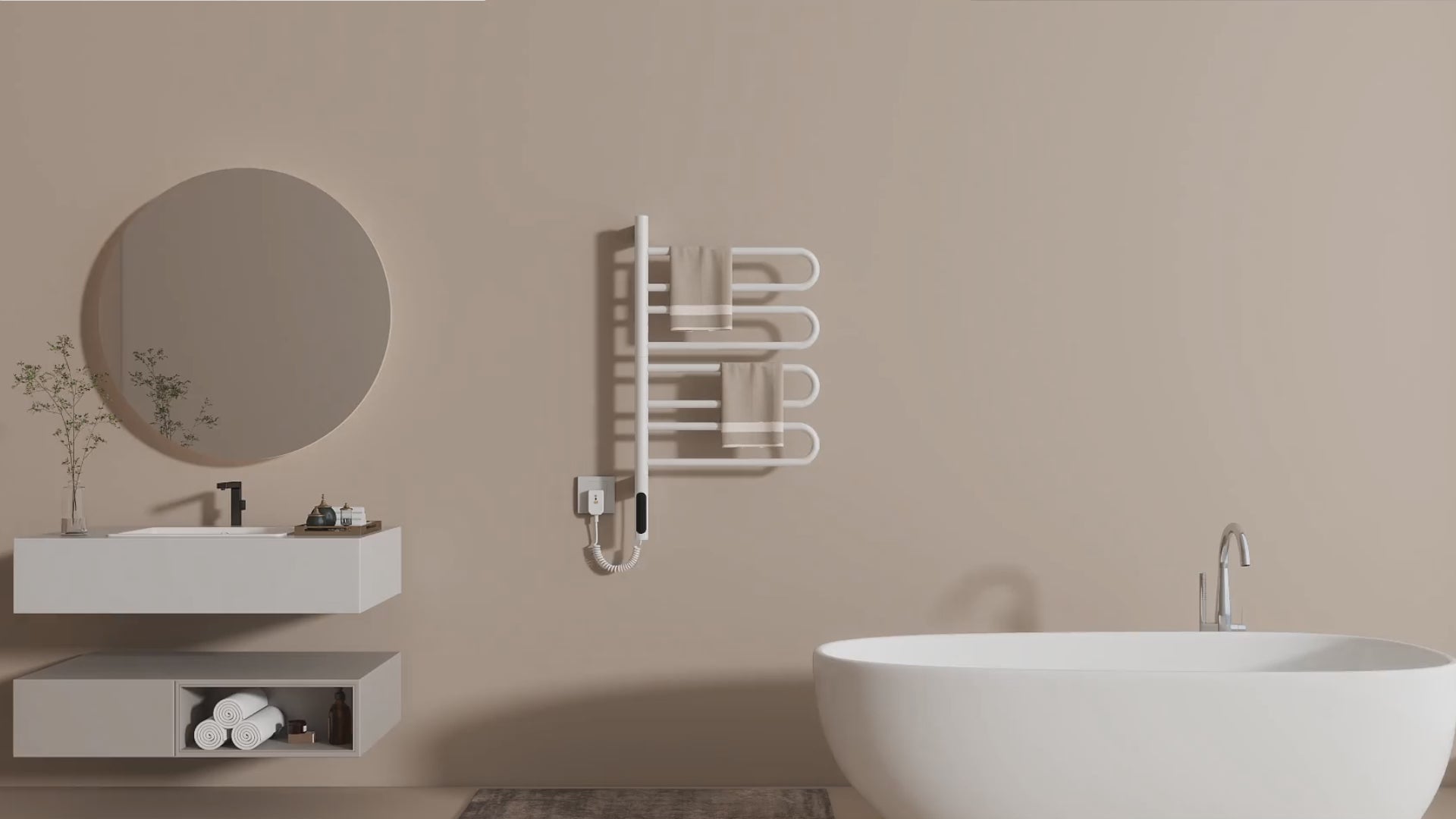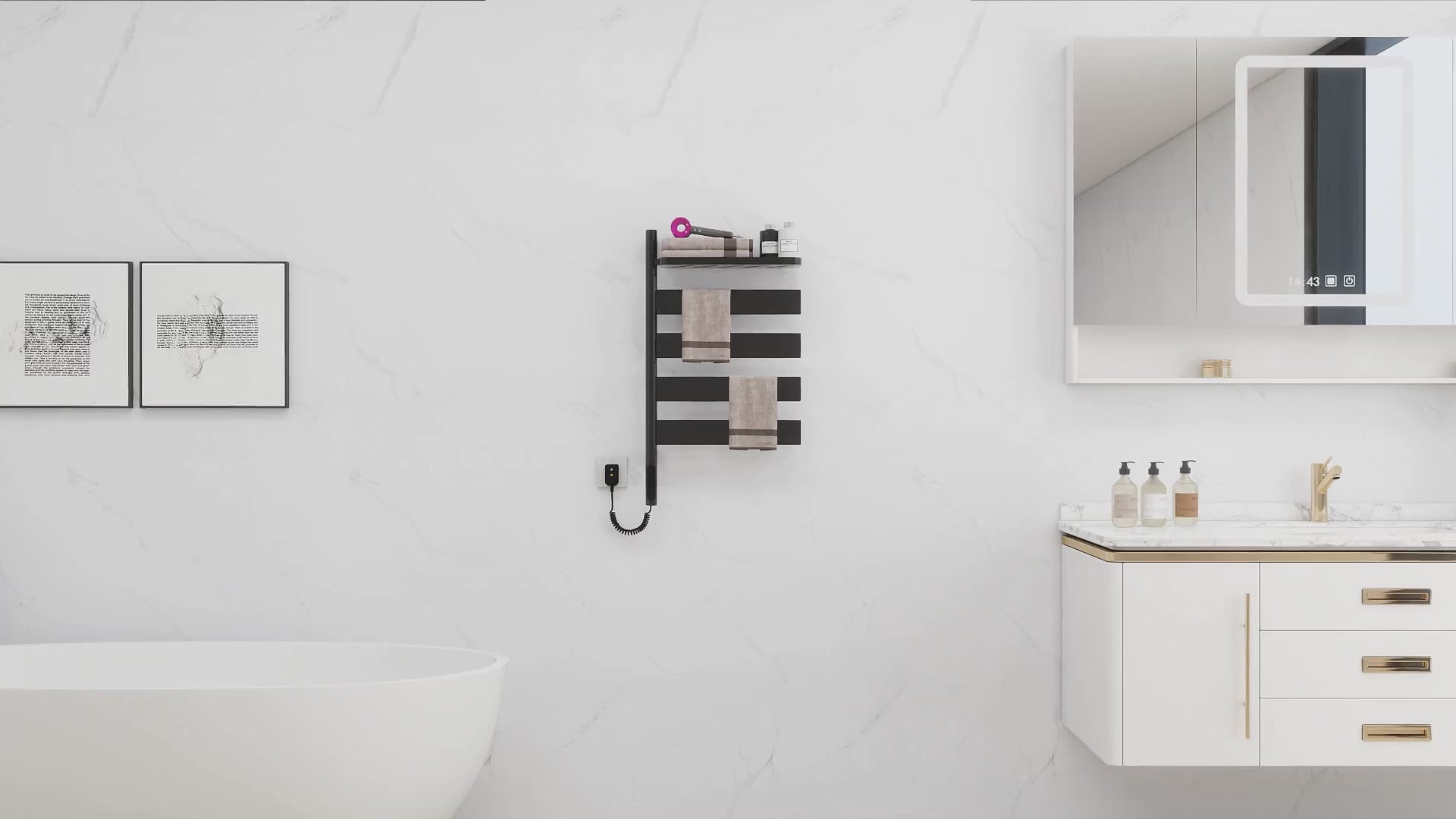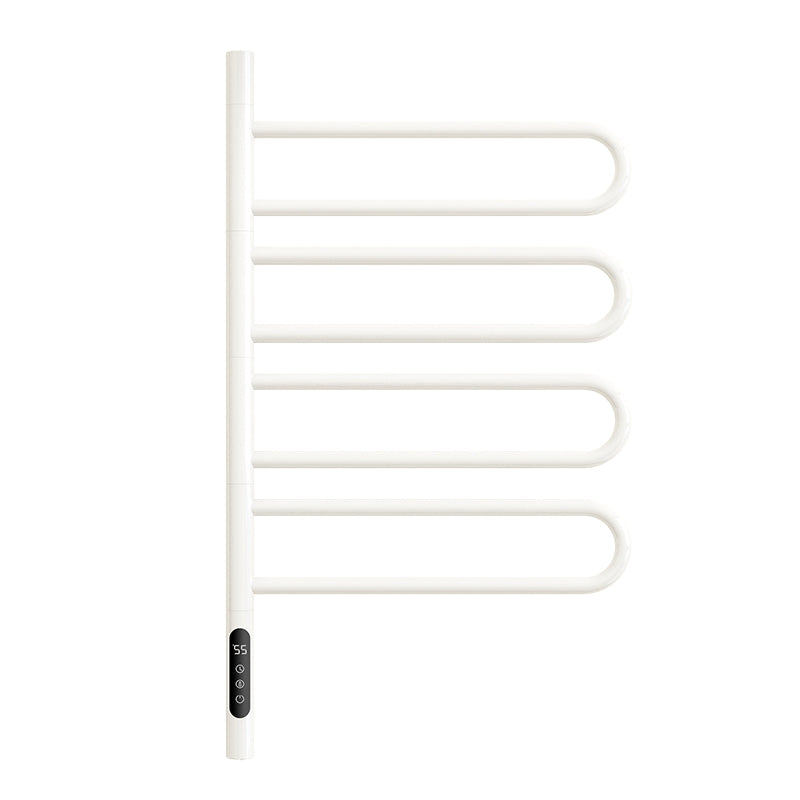Introduction
Comfort and hygiene are imbedded in the design of bathrooms in contemporary North American homes. Instead of a mere luxury, a warm, dry towel after a shower epitomizes an upgrade in lifestyle. When a conventional towel rack simply stores your towels, a towel warmer turns the ordinary into the extraordinary, turning this everyday item into a luxury experience akin to a day at the spa. Towel warmers not only add a layer of comfort but are also important in the fight against dampness, mold, and bacteria growth.
Table of Contents:
- Understanding Different Types of Towel Warmers by Heating Method
- Choosing Between Wall-Mounted and Freestanding Towel Warmers
- Modern Features that Define the Best Towel Warmer
- Finding the Best Towel Warmer for Your Lifestyle: Scenario-Based Guide
- Conclusion
- FAQ
- Related Articles
Understanding Different Types of Towel Warmers by Heating Method
In terms of heating technology, there are two separate categories of towel warmers, the electric towel warmers and the hydronic towel warmers. Each has unique benefits depending on your household setup and energy preferences.
⚡ Electric Towel Warmer
Electric Towel Warmers are the most common choice for existing bathrooms or retrofits. These plug into a standard outlet or can be hardwired for a neater appearance. Electric models heat up quickly—usually within 10–15 minutes, and are easy to install without modifying plumbing. Many feature energy-efficient heating elements that consume as little as 60–150 watts per hour.

Pros
- Easy installation – plugs into a standard outlet or can be hardwired; ideal for retrofitting existing bathrooms.
- Fast heating – available in wall-mounted or freestanding designs.
- Flexible placement – available in wall-mounted or freestanding designs.
- Low energy consumption – most models use between 60–150 watts, similar to a light bulb.
- Independent control – operates separately from home heating, usable year-round.
Cons
- Higher operational cost – if used continuously compared to hydronic systems connected to existing heating.
- May require visible cords – unless hardwired.
- Limited heating capacity> – mainly warms towels, not the surrounding space.
💧 Hydronic Towel Warmer
Conversely, Hydronic Towel Warmers are connected to a home’s central heating or hot water system. They circulate warm water to keep it steady hot. While installation requires professional plumbing, hydronic models are ideal for new builds or major renovations. They tend to be more energy-efficient in the long run, particularly in colder climates where central heating is already active for much of the year.
If you’re seeking the best towel warmer for long-term efficiency and eco-friendliness, hydronic models excel. For flexible installation and quick comfort, electric options are the go-to. Both types provide reliable warmth and elevate your bathing experience to a new level of luxury.

Pros
- Highly energy-efficient – uses the home’s central heating or hot water system.
- Consistent, even warmth – ideal for large bathrooms and cold climates.
- Silent operation – no electrical components or noise.
- Durable and low-maintenance – long lifespan with minimal parts to fail.
Cons
- Complex installation – requires plumbing and often professional setup.
- Less flexibility – performance tied to the central heating schedule.
- Slower heat-up time – takes longer to warm towels compared to electric units.
- Higher upfront cost– better suited for new builds or major remodels.
Choosing Between Wall-Mounted and Freestanding Towel Warmers
Towel warmers also differ by installation style, primarily wall-mounted and freestanding designs. The right choice depends on your space layout, bathroom size, and mobility needs.
Wall-Mounted Towel Warmers
Wall-Mounted Towel Warmers are permanently fixed to the wall, making them ideal for modern, minimalist bathrooms. They save floor space, keep cords hidden, and integrate seamlessly with existing fixtures. Wall-mounted models come in a range of sizes, from small single bars for powder rooms to tall ladder-style racks with the capacity to hold several towels at a time. Their clean appearance and stable heat output make them a preferred option for homeowners seeking a sleek, built-in aesthetic.

Freestanding Towel Warmers
Freestanding Towel Warmers, by contrast, require no installation. They simply plug into an outlet and can be moved between rooms. This portability makes them a practical choice for renters, guest bathrooms, or even laundry areas. They also serve as quick-drying stands for delicate clothing or swimwear.
If your bathroom is small or you value flexibility, a freestanding design may be your best towel warmer option. For a permanent, space-saving solution that enhances interior design, wall-mounted models deliver long-term satisfaction.

Modern Features that Define the Best Towel Warmer
Modern towel warmers do so much more than just simple heat. Today's models combine smart technologies and designs for improved ease of use, energy efficiency, and safety.
-
Built-in Timers: Programmable timer lets users set warming cycles to their everyday schedule in the morning and evening so towels are warmed up before a morning shower then turn off on their own This saves both time and electricity.
-
Swivel Bars: Adjustable or rotating bars offer better airflow and faster drying, especially when drying multiple towels simultaneously.
-
Smart Control & Wi-Fi Connectivity: Premium towel warmers are capable of Wi-Fi connectivity allowing control through smartphone apps or through smart home systems. It allows users to control temperature, schedule operation, and check energy usage remotely.
-
Safety Features: Overheat protection, waterproof switches, and low-surface-temperature designs ensure safe use in humid bathroom environments.
These innovations redefine what it means to own the best towel warmer—a product that balances comfort, technology, and sustainability in one stylish package.
Finding the Best Towel Warmer for Your Lifestyle: Scenario-Based Guide
Selecting an ideal towel warmer comes down to your living situation, space, and comfort level. Below are several typical scenarios with matching recommendations:
-
Small Apartment or Condo: Consider a freestanding electric towel warmer. It's portable, it saves space, and perfect for limited power access.
-
Family Home: A wall-mounted hydronic towel warmer integrated into the home heating system ensures consistent warmth and efficiency.
-
Tech-Savvy Homeowner: Choose a Wi-Fi-enabled electric towel warmer with app control and timer settings. You can turn them on remotely to pre-heat your towels, and you can keep track of your power consumption in real time.
-
Eco-Conscious User: A hydronic model connected to an existing boiler system offers the most sustainable and cost-effective solution over time.
-
Luxury Bathroom Remodel: Consider a dual-fuel towel warmer, which combines electric and hydronic systems—providing flexibility between seasons.
At the end of the day, your ideal towel warmer strikes the right equilibrium of ease of installation, electricity, aesthetics, and smart capabilities. Think of it not as a gadget, but as a wellness upgrade—one that improves comfort, cleanliness, and even the resale appeal of your home.
Conclusion
From eliminating dampness to adding a spa-like touch to your daily routine, a towel warmer is a small investment with big returns. The key to finding the best towel warmer lies in understanding your needs: whether you prioritize easy installation, energy efficiency, or cutting-edge features.
With the right mix of heating type, to installation style, to smart features you will turn your bathroom into an oasis of everyday luxury. Warm towel is not only comfort but it reveals a good design, a modern way of living, and better wellbeing.
Q1. What is the ideal temperature for a towel warmer?
Q2. Are electric towel warmers energy efficient?
Q3. Can I install a hydronic towel warmer in an existing bathroom?
Q4. How long does it take for a towel warmer to heat a towel?
Q5. Do towel warmers require regular maintenance?
How to Install a Wall Mounted Heated Towel Rack: A Step-by-Step Guide
Energy Efficiency and Heated Towel Drying Racks: What You Need to Know
Electric vs. Water Cycle: Pros and Cons of the Two Heated Towel Racks
